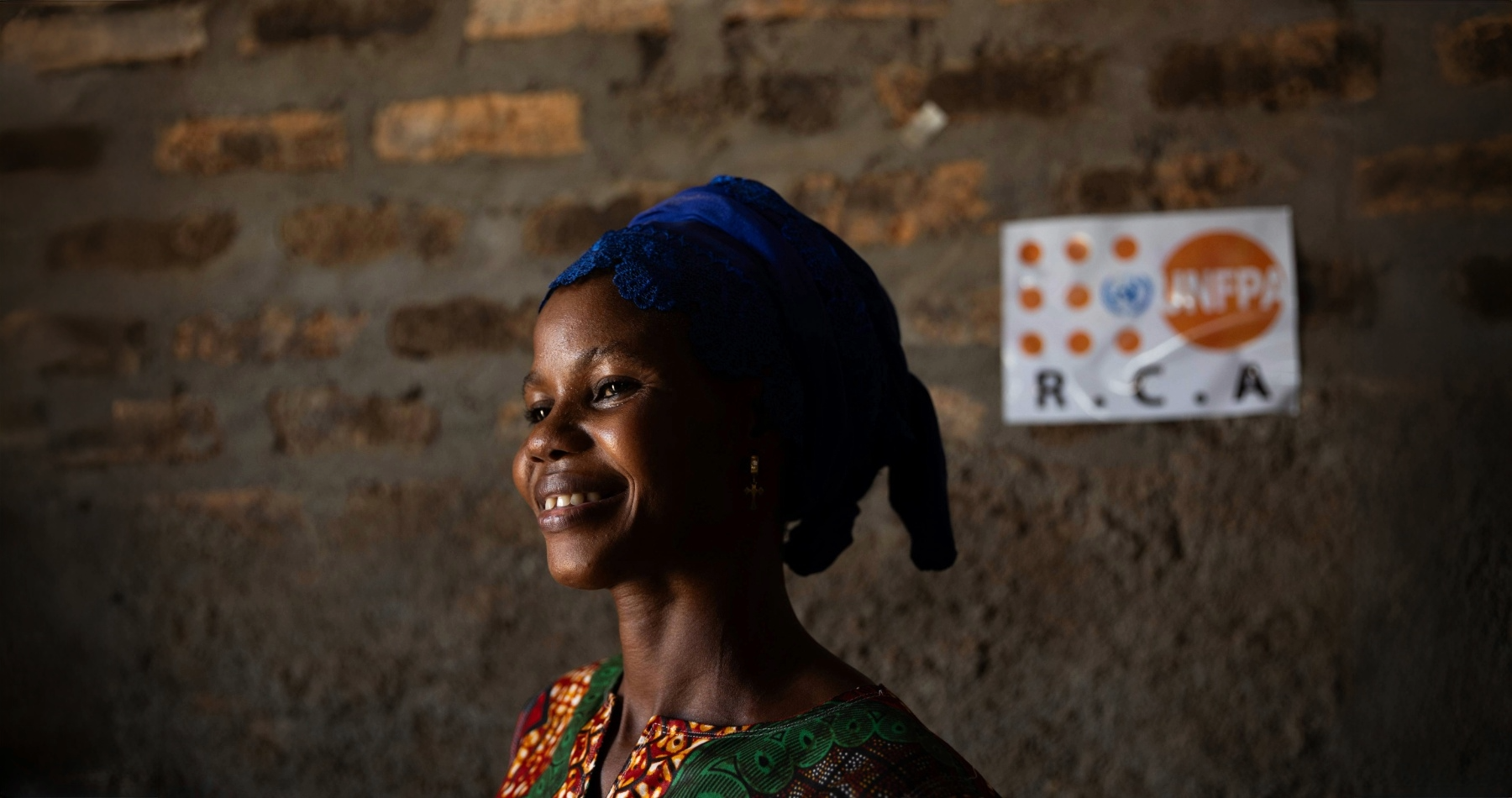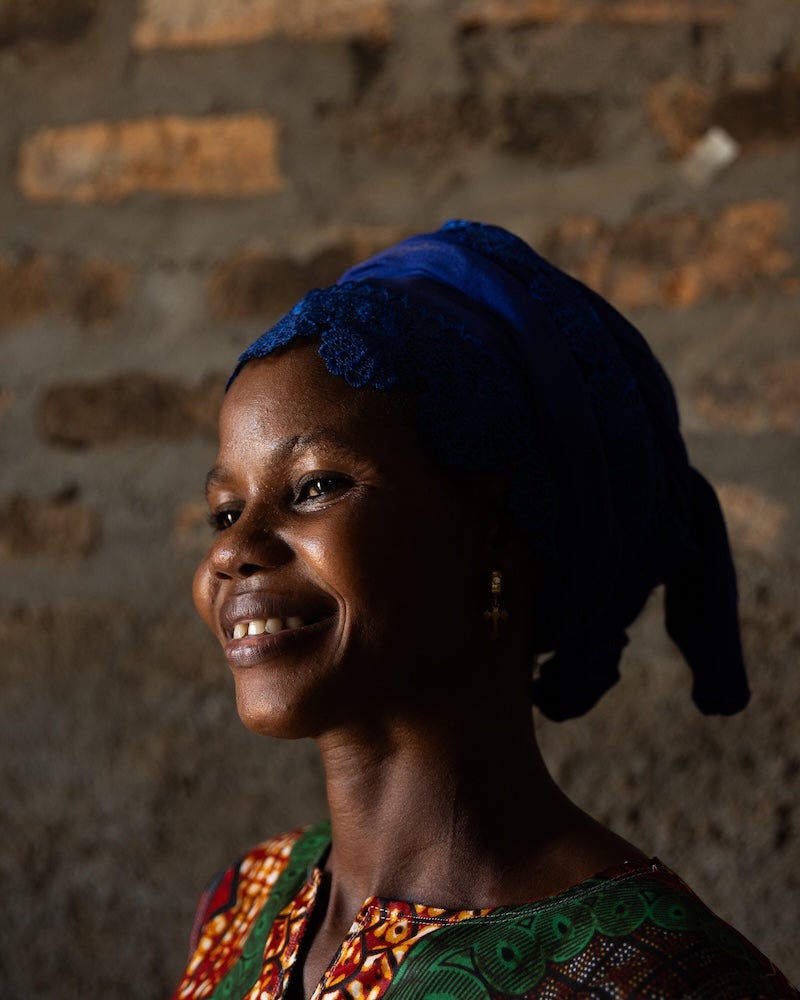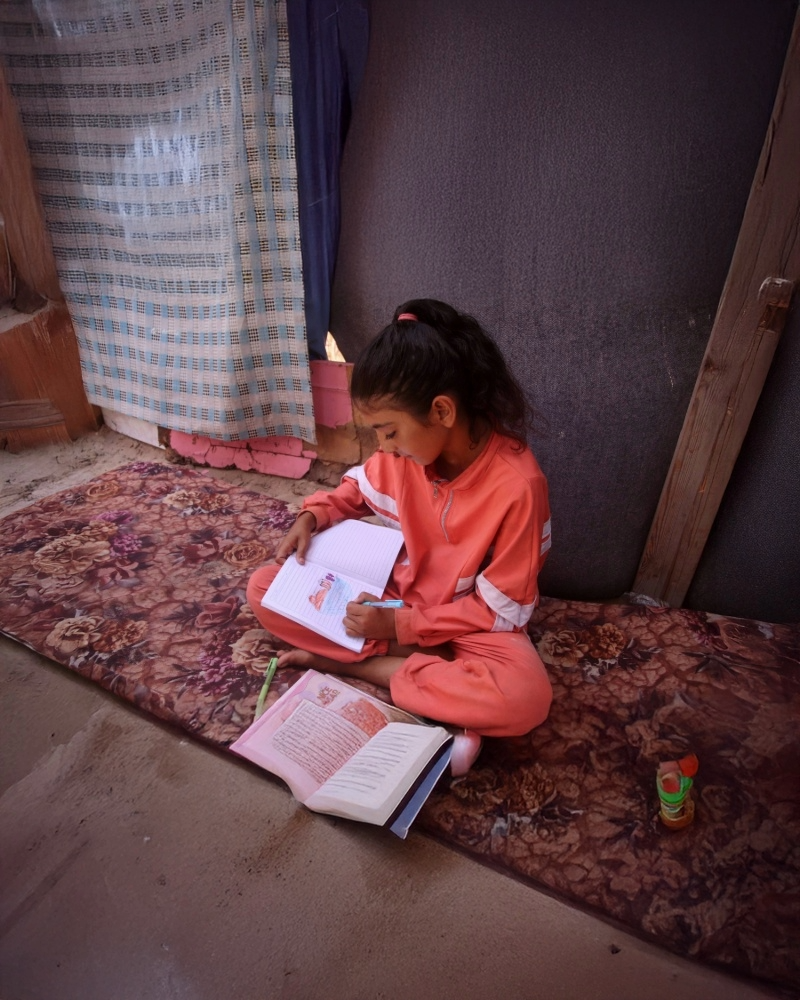
Annual Report 2024


Annual Report 2024 World at a Crossroads
In 2024, our world reached a crossroads.
As we marked the 30th anniversary of the ICPD Programme of Action, UNFPA celebrated the incredible gains achieved globally for women and girls over the three decades since that landmark agreement. At the same time, we took stock of the persistent challenges that continue to stall further progress.
In other words, 2024 was a year of contrasts. Over 10 million people globally benefited from reproductive health services, but many were left behind – especially the marginalized and those affected by crises. In a remarkable show of political engagement, voters in more than 60 countries went to the polls – yet only five women were elected as heads of state out of 31 direct presidential elections held worldwide. Since 1994, we have seen a decrease of 20 per cent in the world’s unmet need for family planning, but also the reversal of reproductive rights in some countries.
We saw an acceleration of action on ending of the harmful practices of child marriage and female genital mutilation – yet the world also entered a moment of stark precarity. More than 123 million people around the world were forcibly displaced in 2024, with more and more women and girls living through armed conflicts and being subjected to sexual violence as a weapon of war. In many regions, women’s rights are increasingly being politicized, threatening the significant and life-changing progress that has been achieved under the auspices of international frameworks. And following the historic revenue seen in 2024, we started 2025 with a precipitous drop in financing across the aid system – even as needs are soaring. The vulnerabilities women and girls face only intensified in 2024, and are now spilling into 2025, amid this depleted funding environment.
As the multilateral system deals with turbulence and needed reform, UNFPA and its partners are stepping up to the challenge. The world is at a turning point, and we are undeterred. With our partners, we are more determined than ever to navigate through this crossroads to continue delivering for women and girls, everywhere.
Delivering Worldwide


39,000 maternal deaths were averted*
18 MILLION unintended pregnancies were prevented*
7.5 MILLION unsafe abortions were prevented*
14.3 MILLION women and young people reached were with sexual and reproductive health services integrated into primary healthcare
6.9 MILLION sexually transmitted infections were prevented by the provision of female and male condoms*
75.2 MILLION couple years of protection were provided by UNFPA-procured contraceptives
158,000 HIV infections were prevented by provision of female and male condoms*
10.6 MILLION marginalized girls were reached with life-skills programmes
290,000 girls were saved from female genital mutilation
54 million women, adolescents and youth benefited from sexual and reproductive health services
CONTRACEPTION PROVIDED BY UNFPA WORLDWIDE
MALE CONDOMS 1,368,338,496
FEMALE CONDOMS 10,440,300
(DOSES) INJECTABLE CONTRACEPTIVES 98,064,324
ORAL CONTRACEPTIVES 67,750,086
CONTRACEPTIVE IMPLANTS 10,791,640
INTRAUTERINE DEVICES (IUDs) 89,370
EMERGENCY CONTRACEPTIVES 3,066,120
PERSONAL LUBRICANTS 185,499,991
CHANGING SYSTEMS TO CHANGE THE WORLD
80 per cent of countries integrated sexual and reproductive health into universal health coverage-policies
65 countries made new commitments to achieve the three transformative results
92 per cent of countries integrated population change into sexual and reproductive health policies
63 per cent of countries had laws and regulations that support the realization of universal access to sexual and reproductive health
52 per cent of countries had a national mechanism to address discriminatory gender and social norms
67 per cent of countries had social movements that advocated against harmful gender and social norms
34 per cent of countries integrated sexual and reproductive health into policies related to climate change
41 per cent of countries had operationalized in-school comprehensive sexuality education
Donors and contributions US$
Norway
56,448,062
Germany
46,434,547
Sweden
45,383,310
Netherlands
37,513,397
Denmark
32,746,324
United States of America
30,520,964
Finland
27,964,205
Switzerland
18,181,818
Japan
12,000,000
Canada
11,040,339
United Kingdom
10,403,120
Belgium
9,803,921
Australia
6,341,789
Spain
5,470,459
Ireland
4,875,406
New Zealand
3,680,400
Luxembourg
3,523,186
Italy
2,651,113
China
1,630,000
Iceland
1,538,639
United States of America
255,879,524
United Nations
168,491,186
United Kingdom
142,886,696
Canada
96,635,899
European Commission
48,907,618
Republic of Korea
48,480,991
Norway
45,484,624
Sweden
44,461,512
Netherlands
44,315,171
Australia
40,972,502
Bill & Melinda Gates Foundation
39,459,354
Japan
38,671,615
Denmark
37,056,617
France
26,706,253
Peru
21,668,004
Luxembourg
17,194,666
Germany
14,467,138
Cameroon
12,432,033
Switzerland
11,217,823
Italy
11,012,104
Albania
10,000
Algeria
10,000
Armenia
3,000
Australia
6,341,789
Austria
458,378
Bangladesh
35,000
Belgium
9,803,921
Bhutan
5,925
Bosnia and Herzegovina
10,000
Bulgaria
32,502
Canada
11,040,339
Chile
5,000
China
1,630,000
Costa Rica
4,861
Cyprus
15,900
Denmark
32,746,324
Dominican Republic
14,975
Egypt
13,123
Eritrea
5,000
Estonia
31,479
Eswatini
8,122
Finland
27,964,205
France
643,086
Georgia
20,000
Germany
46,434,547
Guyana
9,325
Iceland
1,538,639
India
500,530
Indonesia
23,328
Iraq
50,000
Ireland
4,875,406
Italy
2,651,113
Japan
12,000,000
Jordan
49,929
Kazakhstan
7,000
Kenya
10,000
Kuwait
10,000
Lao People's Democratic Republic
3,000
Luxembourg
3,523,186
Madagascar
12,377
Malaysia
15,000
Mauritius
2,125
Mexico
53,434
Micronesia
3,000
Moldova
6,000
Morocco
12,049
Netherlands
37,513,397
New Zealand
3,680,400
North Macedonia
1,059
Norway
56,448,062
Pakistan
498,084
Panama
10,000
Peru
2,013
Philippines
28,419
Poland
26,171
Portugal
600,921
Qatar
999,921
Republic of Korea
926,784
Romania
10,000
Rwanda
14,975
Serbia
5,000
Singapore
5,000
Slovak Republic
5,422
Slovenia
22,172
South Africa
38,032
Spain
5,470,459
Sri Lanka
18,000
Sweden
45,383,310
Switzerland
18,181,818
Tajikistan
1,125
Tanzania
5,595
Thailand
306,746
Trinidad and Tobago
4,991
Tunisia
8,052
Turkmenistan
8,000
Uganda
1,174
United Kingdom
10,403,120
United States of America
30,520,964
Uzbekistan
10,000
Viet Nam
60,000
Zambia
5,000
Zimbabwe
30,000
1 These amounts represent contributions received in 2024 for core resources. Core contributions (also referred to as “regular”, “unearmarked” or “unrestricted” contributions), represent resources that are unrestricted as to their use;
2 Non-core contributions (also referred to as “other”, “earmarked” or “restricted” contributions), represent resources that are earmarked as to their use. The amounts represent contribution revenue for trust funds. Programme implementation continues to be linked to actual receipt of resources.
Programme expenses by country includes core and non-core resources in millions of US$
Botswana
1.3
Burundi
6.5
Comoros
1.3
Congo, Democratic Republic of the
31.6
Eritrea
1.7
Eswatini
1.9
Ethiopia
39.5
Kenya
17.8
Lesotho
2.1
Madagascar
9.8
Malawi
11.6
Mauritius
0.4
Mozambique
19.8
Namibia
2.5
Rwanda
4.9
South Africa
2.8
South Sudan
22.1
United Republic of Tanzania
18.6
Uganda
14.8
Zambia
5.9
Zimbabwe
11.9
TOTAL COUNTRY/TERRITORY ACTIVITIES
239.2
REGIONAL ACTIVITES
15.7
TOTAL FOR EAST AND SOUTHERN AFRICA
254.9
Burkina Faso
13.5
Cabo Verde
1.1
Cameroon
19.1
Central African Republic
10.3
Chad
19.9
Congo
3.4
Cote d'Ivoire
8.3
Equatorial Guinea
1.4
Gabon
1.7
Gambia
3.7
Ghana
5.9
Guinea
10.6
Guinea Bissau
3.5
Liberia
5.1
Mali
18
Mauritania
3.2
Niger
13.5
Nigeria
19.9
São Tomé and Príncipe
1
Senegal
5.7
Sierra Leone
7.7
Togo
3.5
TOTAL COUNTRY/TERRITORY ACTIVITIES
187.4
REGIONAL ACTIVITES
15
TOTAL FOR WEST AND CENTRAL AFRICA
202.4
Djibouti
1.9
Egypt
12.2
Iraq
15.5
Jordan
8.5
Lebanon
9.7
Libya
4.3
Morocco
3.8
Oman
2.2
Somalia
17.5
State of Palestine
24.8
Sudan
32.3
Syrian Arab Republic
36.7
Tunisia
1.7
Yemen
49.1
TOTAL COUNTRY/TERRITORY ACTIVITIES
221
REGIONAL ACTIVITES
8.2
TOTAL FOR ARAB STATES
229.2
Bangladesh
40.9
Bhutan
0.7
Cambodia
3
China
3.6
India
10.5
Indonesia
6.3
Iran (Islamic Republic of)
3.2
Korean, Democratic People's Republic of
2.1
Lao People’s Democratic Republic
4.2
Malaysia
1.5
Maldives
0.7
Mongolia
3.3
Myanmar
14.9
Nepal
11
Pacific Islands (multi-country)1
15.3
Pakistan
21.9
Papua New Guinea
6.5
Philippines
6.1
Sri Lanka
6.2
Thailand
1.8
Timor-Leste
4.1
Viet Nam
5.7
TOTAL COUNTRY/TERRITORY ACTIVITIES
268.2
REGIONAL ACTIVITES
13.5
TOTAL FOR ASIA AND THE PACIFIC
281.7
Armenia
1.9
Azerbaijan
1.3
Belarus
1.6
Bosnia and Herzegovina
2.7
Georgia
2.2
Kazakhstan
1.8
Kosovo2
1
Kyrgyzstan
2.3
North Macedonia
1.2
Moldova, Republic of
16.3
Serbia
1.4
Tajikistan
1.7
Türkiye
11.6
Turkmenistan
1.3
Ukraine
50.8
Uzbekistan
3.2
TOTAL COUNTRY/TERRITORY ACTIVITIES
103.7
REGIONAL ACTIVITES
10.3
TOTAL FOR EASTERN EUROPE AND CENTRAL ASIA
114
Bolivia (Plurinational State of)
4.8
Brazil
5.5
Caribbean (multi-country)3
6.1
Chile
0.2
Colombia
4.6
Costa Rica
1.1
Cuba
1.1
Dominican Republic
1.9
Ecuador
4.6
El Salvador
3.8
Guatemala
6.4
Haiti
10.8
Honduras
4.7
Mexico
5.4
Nicaragua
2.1
Panama
1.7
Paraguay
2.6
Peru
2.9
Uruguay
3.6
Venezuela, Bolivarian Republic of
9.2
TOTAL COUNTRY/TERRITORY ACTIVITIES
84.4
REGIONAL ACTIVITES
11
TOTAL FOR LATIN AMERICA AND THE CARIBBEAN
95.4
1 Figures for the Pacific Islands (multi-country) covers the following countries: Cook Islands; Fiji; Kiribati; Marshall Islands; Federated States of Micronesia; Nauru; Niue; Palau; Samoa; Solomon Islands; Tokelau; Tonga; Tuvalu; and Vanuatu.
2 References to Kosovo shall be understood to be in the context of Security Council resolution 1244 (1999).
3 Figures for the Caribbean (multi-country) covers the following countries and territories: Anguilla; Antigua and Barbuda; Aruba; Bahamas; Barbados; Belize; Bermuda; British Virgin Islands; Cayman Islands; Curacao; Dominica; Grenada; Guyana; Jamaica, Montserrat; Netherlands Antilles; St. Lucia; St. Kitts and Nevis; Saint Maarten (Dutch part); Saint Vincent and the Grenadines; Suriname; Turks and Caicos; and Trinidad and Tobago.
Revenue and expenses in millions of US$
2024
US$M
Core resources
Contributions to core resources
231.1
Less: transfer to other revenue for reimbursement of tax charges
(7)
Other revenue
172.9
Total core resources revenue
397
Non-core resources
Contributions to non-core resources – gross
1,341.4
Less: refunds to donors
(25.8)
Less: indirect costs
(71.8)
Less: allowance for doubtful contributions receivable
(24.6)
Other revenue
19.2
Total non-core resources revenue
1,238.4
Total revenue
1,635.4
US$M
Core resources
Country programmes, global and regional interventions, and other programme activities
275.8
Institutional budget
207.7
Corporate
38.7
Total core resources expenses
522.2
Non-core resources
Country programmes, global and regional interventions, and other programme activities
998.5
Corporate
7.3
Total non-core resources expenses
1,005.8
Total expenses
1,528